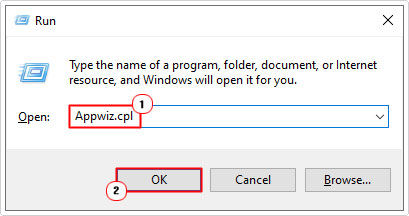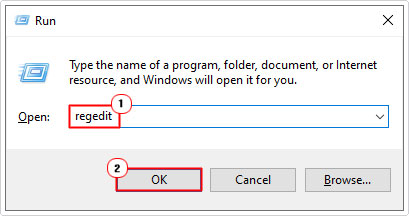| Attention Before you read this post, I highly recommend you check out my resources page for access to the tools and services I use to not only maintain my system but also fix all my computer errors, by clicking here! |
The trusted platform module (TPM) is an on-board chip designed to protect your systems components from a litany of threats through the use of cryptographic keys. It uses an unforgeable hash key to authenticate both hardware and software (by evaluating change). However, the technology is not infallible, and thus, at times has been known to “break” or malfunction. If your trusted platform module has malfunctioned, then you needn’t worry, as you’re in the right place.
Microsoft 365 provides end users with subscription-based access to their world renowned family of productivity tools and programs. Microsoft 365 contains both Outlook and Word, two tools that are known to produce trusted platform module has malfunctioned warnings when communication between the TPM (Trusted Platform Module) chipset and app has been severed.
Error Overview
Before we delve into the various ways you can fix TPM issues, there are a number of things for you to note. TPM errors manifest themselves in a variety of ways, all with their own error codes. However, this tutorial, adopts a more general approach to tackling this problems.
So we will assume, you are experiencing any one of the possible TPM error codes listed below:
80090016
80090030
C0090016
80090034
In the vast majority of cases, end users encounter these error codes when attempting to authenticate the Microsoft 365 app. However, there are other known circumstances such errors can and do occur in.
What Causes Trusted Platform Module Has Malfunctioned Errors?
This tutorial covers all the various ways you can fix Trusted Platform Module has Malfunctioned issues.
However, before we get to the solutions, we must first mention the most known causes:
- A corrupted TPM
- The system has been infected with a malicious virus.
- Two or more third-party apps are conflicting.
- Use of the PC Health Check app.
- Corruption of the NGC folder.
It’s more than likely that the malfunction of the trusted platform module is due to one or more of the possible causes listed above.
So let’s get to the solutions.
How to Fix It
TPM malfunctions occur as a result of many different things (as indicated above). General symptoms may include, the inability to access certain apps, such as Microsoft Office or Microsoft Outlook. Thankfully, there are several things you can do when caught up in this situation.
Uninstall PC Health Check App
Many end users report a trusted platform module 80090016 error, after the installation of Microsoft’s PC health check app. Thus, if you have this app lying on your system somewhere, you may want to consider removing it.
Removal is fairly simple, just do the following:
1. First, boot into your system as a full administrator.
2. Then press  + R, type Appwiz.cpl and click on OK.
+ R, type Appwiz.cpl and click on OK.

3. When Add or Remove Programs loads up, click on Windows PC Health Check, then click on Uninstall.


Follow the onscreen instructions to successfully remove the tool.
Disable Internet Security Tool(s)
Depending on how your internet security software is configured, it may or may not be blocking your Microsoft 365 app. To verify whether or not this is the case, I recommend you disable your internet security software, temporarily.
You should be able to disable it by right-clicking on its Taskbar icon and selecting Disable. However, instructions will vary.
If the software is found to be the culprit, then I suggest you create an exception rule for the app – as a viable workaround.
Use Windows Repair Tool to Fix Trusted Platform Module Has Malfunctioned
As already noted, Trusted Platform Module has Malfunctioned errors are known to occur, due to a wide variety of things. Whether it’s file corruption, virus infection or a program conflict.
This brings us to the repair tool Advanced System Repair Pro, which is an all-in-one, repair and maintenance suite. Designed to scan, detect and repair a plethora of known error types on your system.
Thus, before attempting any of the more, complex solutions, it’s highly recommended that you give this automated repair tool a try.
You can learn more about the various ways it can help your system, from the link below:
CLICK HERE TO CHECK OUT ADVANCED SYSTEM REPAIR PRO
  |
Reset Microsoft 365 Activation
If the Trusted Platform Module has malfunctioned error appears when attempting to use Office 365, you may want to consider resetting the activation state for the app. This will allow you to run through the activation process again.
To do that, simply follow the instructions below:
1. First, log into your system as an admin.
2. Then download Support and Recovery Assistant from the following Microsoft link: https://www.microsoft.com/en-us/download/100607
3. Once downloaded, open the .zip file and install it by running SaraSetup.exe.
4. Once installation has complete, Support and Recovery Assistant should start automatically. From here, click on Office & Office Apps, then Next.


5. Now select I have an Office 365 subscription, but I’m having trouble installing it, then click on Next.


6. The app will now ask you Is this the affected machine, click on Yes, followed by Next. Then follow the onscreen instructions to complete the reset process.


Remove Microsoft Office Credentials
Another method you can use, when having problems activating your MS Office suite due to Trust Platform Module has malfunction issues. Essentially, you’re removing your Office credentials, which will reset everything back to default – so you can set everything up again.
Anyway, to utilise this method, simply do the following:
1. First, boot into your computer as a full administrator.
2. Then type Credential Manager into the Type here to search box, then click on Credential Manager.


3. This will bring up the Credential Manager, from here, click on Windows Credentials.


4. Expand any Microsoft Office credentials you find, by clicking on the Downward Icon beside it, then click on Remove.


6. Once you’ve finished, restart the computer to complete the process.
Take Ownership of NGC Folder
If you encounter the error code 80090030 when attempting to access Microsoft Outlook, then it’s likely the result of an issue with the NGC folder. It’s the folder that contains your device security information, which can get corrupted. To rectify this problem, you will need to access and then remove the contents of this folder.
However, before you can do that, you will need the appropriate rights (ownership) over the folder.
For step-by-step instructions on how to do this, check out my post on fixing error code 0x80070032.
Clear TPM Keys
If the Trusted Platform Module Has Malfunctioned error continues to rear its ugly head, you may want to try resetting the TPM.
Note: It’s recommended that you save all your work and backup your systems data before you start this process.
1. Now, boot into your computer as an admin.
2. Then type Windows Security into the Type here to search box and click on Windows Security.


3. Now, on the sidebar, click on Device Security.


4. When Device Security loads up, click on Security processor details.


5. On the next screen, select Security processor troubleshooting.


6. Now, click on the Clear TPM button.


Disable Authentication Protocols
For authentication, Microsoft 365 uses OAuth and SAML protocols. However, the despite the use of modern, advanced protocols, this can still result in the trusted platform module has malfunctioned error you’re experiencing now.
As a possible workaround, you could try disabling them. To do that, follow the instructions below:
WARNING: The registry is a very sensitive area of your operating system. As a result, any wrong modification to this component, can render your system fully inoperable.
1. First, boot into your computer as a full administrator.
2. Then press 




3. When Registry Editor loads up, go to the following path:
HKEY_CURRENT_USER\SOFTWARE\Microsoft\Office\16.0\Common\Identity


4. Now, in the right-pane, right-click then select New > DWORD (32-bit) Value.


5. Name it EnableADAL, then double-click on it.


6. This will bring up the Edit DWORD (32-bit) Value box, from here, type 0 into the Value data box, then click on OK.


7. Restart your system then retry Microsoft 365.
Enable Memory Integrity
Memory integrity is a built-in Windows security feature designed to protect your system from the most notable malicious attack types. Enabling this feature has been known to fix “Trusted platform module has malfunctioned” errors.
To enable this feature, simply do the following:
1. First, follow steps 1 – 3 of Clear TPM Keys.
2. From Device Security, click on Core isolation details.


3. Lastly, switch the slider to On for Memory integrity.


Are you looking for a way to repair all the errors on your computer?


If the answer is Yes, then I highly recommend you check out Advanced System Repair Pro.
Which is the leading registry cleaner program online that is able to cure your system from a number of different ailments such as Windows Installer Errors, Runtime Errors, Malicious Software, Spyware, System Freezing, Active Malware, Blue Screen of Death Errors, Rundll Errors, Slow Erratic Computer Performance, ActiveX Errors and much more. Click here to check it out NOW!

